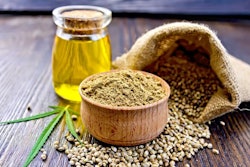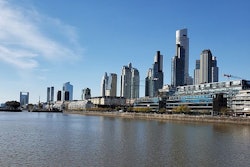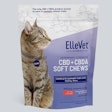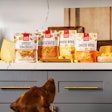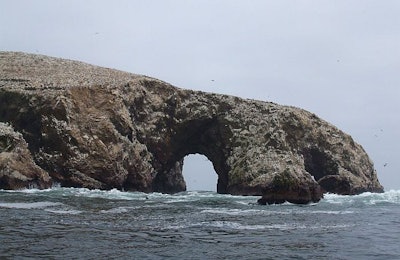
In September, fishmeal producers in Peru and Chile chatted with me as I led two charlas, or interactive educational presentations. We discussed how humanization of pets and premiumization of pet food have influenced the global dog, cat and other pet food markets. We explored opportunities for fish processors along the Pacific Coast of South America to move from selling their products as livestock feed ingredients to selling as a dog, cat and other pet food ingredient. However, use of the controversial synthetic antioxidant ethoxyquin creates barriers to entering the global pet food ingredient market, despite Peruvians’ and Chileans’ interest.
NOTE: Kemin, a supplier of natural antioxidants, invited me to give these presentations. Kemin advertises in Petfood Industry and is a client of WATT Global Media. Kemin paid for my travel expenses.
Fiery fishmeal prevented by antioxidants
Without antioxidants added to interrupt certain chemical processes, fishmeal can explode, to put it simply, Rafael Aguirre, business director for Kemin distributor Rheintek Latinoamerica, said. He showed me a video of a burning warehouse set ablaze by fiery fishmeal.
Scientifically speaking, lipids can react with oxygen, which produces heat, according to the Encyclopedia of Food Sciences and Nutrition. Lipids are the main building blocks of animal fats. Most fishmeal contains between 8-12% lipid compounds, including polyunsaturated ones like omega-3 fatty acids. Unsaturated fatty acids contain available sites for reactions with other molecules, which makes them even more likely to combine with oxygen than other fats. If those lipids react with oxygen in the air, the fishmeal can be scorched, ruining the product, or even ignite.
Fishmeal producers are therefore obliged to use antioxidants to prevent both explosions and ruined fishmeal. Fishmeal producers frequently use a synthetic antioxidant, ethoxyquin, to guard against damage and fire. Since much of that fishmeal has been destined for livestock and aquaculture feed in Asia and other regions, ethoxyquin hasn’t been a problem for fish processors along the Pacific Coast of South America.
Pet owners reject ethoxyquin for possible health risks
Within the pet food industry, ethoxyquin can cause marketing challenges. In the 1990s, the United States Center for Veterinary Medicine (CVM) began receiving complaints from dog owners claiming ethoxyquin in the dog food caused numerous effects, including allergic reactions, skin problems, major organ failure, behavior problems and cancer.
“However, there was a paucity of available scientific data to support these contentions, or to show other adverse effects in dogs at levels approved for use in dog foods…” according to the CVM website. “Nevertheless, CVM has asked the pet food industry to voluntarily lower the maximum level of use of ethoxyquin in dog foods from 150 ppm (0.015%) to 75 ppm. Regardless, most pet foods that contained ethoxyquin never exceeded the lower amount, even before this recommended change.”
“Ethoxyquin itself is not genotoxic or carcinogenic, and does not cause developmental toxicity,” according to the European Food Safety Authority. However, some of the chemicals created as animal bodies metabolize the synthetic antioxidant may be have negative effects. In dogs, 11 milligrams of ethoxyquin per kilogram in a balanced diet “might be considered as potentially safe.” For cats there is not enough data to make a definitive statement on safety.
Researchers have collected limited empirical evidence that ethoxyquin may act as an endocrine disrupter, a compound that interrupts animals’ hormonal signaling systems, Carlos Bacal, sales manager for Kemin said during his presentation at CIPAL. Scientists have observed that ethoxyquin may harm aquatic life. For example, a 2018 study in Diseases of Aquatic Organisms documented detrimental effects on zebrafish and water fleas exposed to ethoxyquin, although at levels higher than those found in the environment.
Regulation of ethoxyquin in dog, cat and other pet foods
Regardless of somewhat ambiguous research, many pet owners reject ethoxyquin in their pets’ food, said Aguirre.
What’s more some countries regulate its use, particularly the United States, and require it to be noted on package labels. The U.S. Food and Drug Administration set specific levels of ethoxyquin that pet food and other products can contain. FDA requires specific wording labeled on any product containing ethoxyquin, even if only present as a component of another ingredient. Pet food labels must be labeled with “Ethoxyquin, a preservative,” or “Ethoxyquin added to retard the oxidative destruction of carotene, xanthophylls, and vitamins A and E.”
The kicker is, ethoxyquin and other synthetics are much less expensive than antioxidants from natural sources, like the plant-based tocopherols Kemin sells.
Ultimately, Peruvian and Chilean fishmeal producers needed to decide if paying more for natural antioxidants (and other changes) would pay off with access to the pet food ingredient market and associated higher prices for their products. Many of the questions they asked and information they wanted to know could apply to others looking to enter the pet food space, which I’ll discuss in a later article or blog post.





